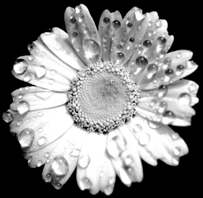

October 2007
The story behind it
01/10/2007
Along one of many of my walks in Gerês, in the north of Portugal, I had the chance of finding the beech Autumn colours at their peak. You seldom see them like this. I made the most of having the right light and a clear crispy air (which is common to find after some rain). I was walking alone that time, following to other places in the Serra. Even with the weight of the cameras, tripod and all, taking this photo has been memorable and a privilege. I have yet to find the beeches like that again. I grabbed the moment. It also makes part of a group of four seasonal photos at the same spot, that I am working on. I chose it to be the first on the cover page.Comment
Technical issues
01/10/2007
It makes full use of the colour gamut and resolution available in slide film. It allowed making use of dynamic range, demanding in the case of slide, without any ND grad filter. I used a circular polariser. The slight film grain provides volume and brings up detail. I feel that grain is very much useful in landscape and portrait photography. The 24mm prime lens used, with a large f-stop, provides visual acuity and field depth. The tripod held the camera at around 40 cm above the forest floor, at a tilt angle near 45º. The visible distortion on the tree trunks helps provide the trees with power and grandeur.Critial review
01/10/2007
I deal here with capturing the object, using light, colour, and composition. The story already described the opportunity - I created my own luck, using the material I had on my back, seizing the moment. The colour respects reality, just as the original slide can show. It is a good example of how straight photography can provide with totally real magnificent colours. All dynamic range is used. The polariser, at 90º with the sun and little sky areas, increased light and colour contrasts. Using the full field depth is nearly a must, with no unfocused planes. The rule of thirds is clear, along the ground and tree lines, providing balance. The oblique lines, on the left, provide dynamics.Where you should place it
01/10/2007
You should place the right photograph in the right place. This photo is not the most demanding in ambient light, with no severe shadows, or too much detail in dark areas, presenting low contrasts. Nonetheless, the visual richness and inspiration that this particular photo transmits will be lost in bad lighting. I advise hanging it on a monochromatic wall, light or dark brown, dark grey, or even blue or red. I don't think that a yellow wall does a good job. It's a dinning-room or a special office photo, as a large print. It is a photo for inspiration in the right place. A light brown passepartout with a dark wooden frame fits very well, I can tell you.






















